GET A FREE MULTI-CHANNEL MARKETING QUOTE TODAY
Unlocking Business Longevity Through Empowering Leadership and Ownership Transitions

Entrepreneurs spend years building businesses from the ground up, and one of the most crucial aspects of ensuring their longevity is planning for the future. Succession planning is not just a checklist item for a distant future—it’s a strategic move to protect the legacy and continued success of a company. While there are multiple paths for business succession, I’ve become a firm believer in one specific route: employee ownership. This model not only guarantees a smooth transition but also empowers the people who have dedicated their careers to the success of the business.
The Case for Employee Ownership
Why employee ownership? Over the years, I’ve witnessed firsthand the impact of bringing employees into decision-making roles and giving them ownership in the company. It instills a deep sense of responsibility, encourages long-term thinking, and builds a culture where every team member is invested in the overall success.
One of the best resources that shaped my thinking on this is Brad Hams’ book, Ownership Thinking. Hams argues that businesses should not only prepare for succession but also actively involve employees in understanding the financials and broader goals of the business. When employees are aware of the bigger picture, they’re motivated to contribute more meaningfully to the company's success. It’s a concept that goes hand-in-hand with employee ownership because the more engaged your employees are, the easier the transition of leadership becomes.
In addition to this, Jack Stack’s The Great Game of Business emphasizes the power of open-book management—a system where all employees are trained to think and act like owners. Stack shows how democratizing the financials and teaching employees how their work affects the bottom line can turn an ordinary company into an extraordinary one. By following this model, businesses are more likely to develop internal leaders who can take the reins when it's time for succession.
Succession Planning Options
Employee ownership is a robust model for business succession, but it’s not the only one. Let’s look at a few other methods:
- Family Succession – This is the traditional route, where the business is passed down to family members. While this can work well in some cases, it doesn’t always ensure that the most qualified or motivated people are leading the company. Often, family transitions can lead to internal conflict or leadership gaps.
- External Sale – Selling the company to another business or private equity group is another common approach. This can bring a lucrative exit for founders, but it often results in significant changes to company culture and operations. Employees may face layoffs, or the company could shift its focus entirely.
- Management Buyout (MBO) – In this model, the existing management team purchases the company. This is often a great option if the leadership team is already seasoned and willing to take on ownership responsibilities. However, it can require significant financing and is typically reserved for larger organizations.
- Employee Stock Ownership Plan (ESOP) – ESOPs offer a structured way for employees to acquire ownership in the company over time. ESOPs come with tax advantages, but they also require complex legal structuring. However, they can be a powerful tool for creating a culture of ownership and retaining key talent.

Real-World Examples from Key Books
Let’s dive deeper into the strategies mentioned in the books I referenced:
- In The Employee Ownership Manual, Robert Postlethwaite and Guy Rigby provide a detailed guide on how businesses can implement employee ownership, specifically focusing on legal structuring, tax considerations, and financial benefits. They emphasize that employee ownership doesn’t have to mean handing over 100% of the business at once. A gradual transition can be made to ensure that the new leaders are prepared and motivated.
- Case in point: A medium-sized law firm in the U.S. looking to transition ownership. By following the guidelines in The Employee Ownership Manual, they set up an ESOP that gave senior lawyers and rising stars within the firm the opportunity to buy into the business. This not only ensured continuity but also created a powerful incentive for key employees to stay and drive the firm’s future success.
- Jack Stack’s The Great Game of Business offers another inspiring example**. In this book, Stack illustrates how SRC Holdings Corporation, a struggling company, was turned around by involving employees in the financial success of the business. By implementing open-book management, Stack gave employees ownership stakes, which transformed their mindset. SRC went from near-bankruptcy to a thriving company, with employees leading the charge.
- Imagine a home services company where technicians and office staff are given access to company financials and an ownership stake. This small business could use The Great Game of Business model to turn its team into proactive, entrepreneurial-minded individuals. Over time, these team members would develop the skills and motivation to run the company, making succession planning easier and more organic.
- Brad Hams’ Ownership Thinking focuses on accountability**. In businesses where employee ownership is part of the long-term vision, Hams encourages building a culture of ownership thinking from day one. In this model, employees are regularly educated on the company’s performance, and their actions are tied directly to company goals.
- For example, in a law firm, training young associates to understand the financials and take responsibility for client acquisition early on would foster a sense of ownership. By the time senior partners are ready to retire, these associates have already been groomed for leadership roles, making the transition smoother.
Building the Right Culture
For employee ownership and other succession strategies to work, a company must foster the right culture. Leaders need to be transparent, and employees must feel empowered to step up. This isn’t just about handing over shares or titles—it’s about creating a team that believes in the company and understands its goals.
Organizations like the National Center for Employee Ownership (NCEO) offer resources, guidance, and a community for businesses considering employee ownership. Joining groups like The ESOP Association or exploring literature from The Democracy Collaborative can provide further insights.
For personal mentorship, finding a business coach experienced in succession planning or joining a mastermind group of other entrepreneurs transitioning to employee ownership can provide the support and guidance needed to navigate this process.
Moving Forward: Taking Action on Succession Planning
The key takeaway from experienced entrepreneurs and the lessons shared by thought leaders in succession planning is this: You don’t need to do it alone. Succession planning, particularly employee ownership, is a strategic decision that requires careful thought, planning, and execution. But it’s also one of the most rewarding choices a business owner can make.
If you're in the early planning stages, consider exploring ESOPs, setting up an open-book management system, or simply starting conversations with key employees about leadership development. Whether you opt for employee ownership or another form of succession, preparing early will ensure your business continues to thrive long after you’ve passed the torch.
Employee Ownership: The Future of Succession Planning for Business Longevity
Looking for a sustainable way to pass on your business and maintain company culture? Employee ownership is the answer! Succession planning through an Employee Stock Ownership Plan (ESOP) or other employee ownership models empowers your team, boosts long-term engagement, and protects your legacy.
Benefits of Employee Ownership:
- Increased productivity
- Job retention and economic stability
- Smooth leadership transitions
Start succession planning for 5-10 years by identifying key leaders and educating staff on ownership responsibilities.
Need expert guidance? Explore resources like the National Center for Employee Ownership (NCEO) and The ESOP Association.
Main St. TIPS
Having someone to handle all the ins and outs of connecting with potential clients in multiple ways across different platforms is a huge relief. Thanks to Scale Main St., I can concentrate on building direct relationships with my clients, all the while knowing that the work in the background is being done for me.
Anjie Price, Mulukakao Hattiesburg
Scale Main St created content for our Facebook and Instagram accounts, which increased organic traffic and leads on social. Katie was a delight to work with and an expert content creator! She really takes the time to research what is relevant to your business for good content.
Branching Out Tree Care Chico
Solutions for Organic Digital Growth: Mulukakao Hattiesburg’s Marketing Success | Client Spotlight
Mulukakao Hattiesburg approached us with a vision: to create buzz and build a loyal customer base—all organically. We delivered tailored, strategic solutions to meet their needs and set a strong foundation for sustainable growth.
01
Brand Positioning Through Research
Establish a unique identity in a competitive market.
Our Solution
Conducted in-depth brand and competitor research to uncover gaps and opportunities. This informed a data-driven messaging strategy that resonates with the Hattiesburg audience.
02
Data-Backed Marketing Strategy
Develop a cohesive plan to drive engagement before launch.
Our Solution
Created a detailed marketing plan focused on organic growth. Each step is guided by data, ensuring every action aligns with long-term goals.
03
Lead Generation and Relationship Building
Build an audience from scratch.
Our Solution
Developed targeted lead lists and initiated direct social media outreach. By connecting with influencers, local businesses, and engaged individuals, we’ve nurtured authentic connections ahead of launch day.
04
Social Media Engagement Strategy
Generate pre-launch excitement without paid ads.
Our Solution
Executed a targeted social media outreach campaign, inviting key individuals and fostering conversations. These efforts are driving organic visibility and genuine anticipation.
The Results: Building Momentum Organically
Mulukakao is gaining traction in Hattiesburg through thoughtful, solutions-driven marketing. Without a single paid ad, we’ve:
- Established a recognizable, relatable brand.
- Built anticipation and engagement ahead of launch.
- Positioned the business for seamless growth when paid campaigns begin.
📈 Next Steps for Mulukakao Hattiesburg
- Deepen connections with the local audience.
- Continue leveraging organic strategies to grow awareness.
- Prepare for expansion to other cities.
- Wholesale & Retail Promotion
- Continued Relationship Building
Newsletter | Main St. Tips
We will get back to you as soon as possible.
Please try again later.
Business Hours
- Mon - Fri
- -
- Sat - Sun
- Closed




